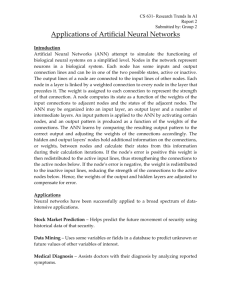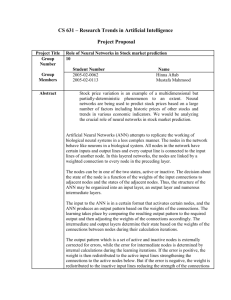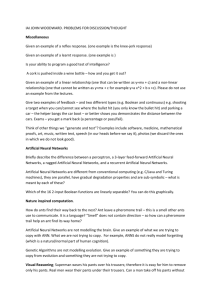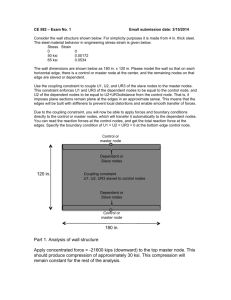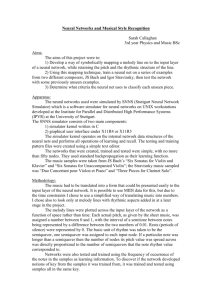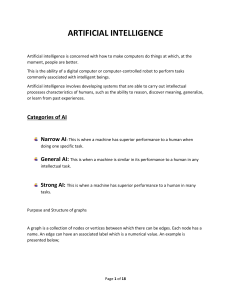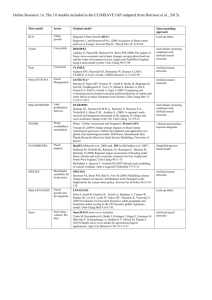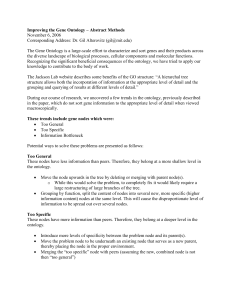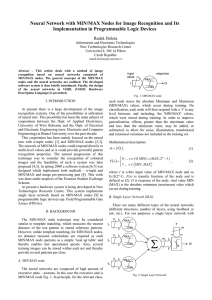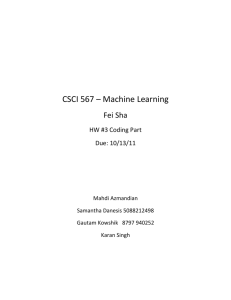Supplementary material - Springer Static Content Server
advertisement
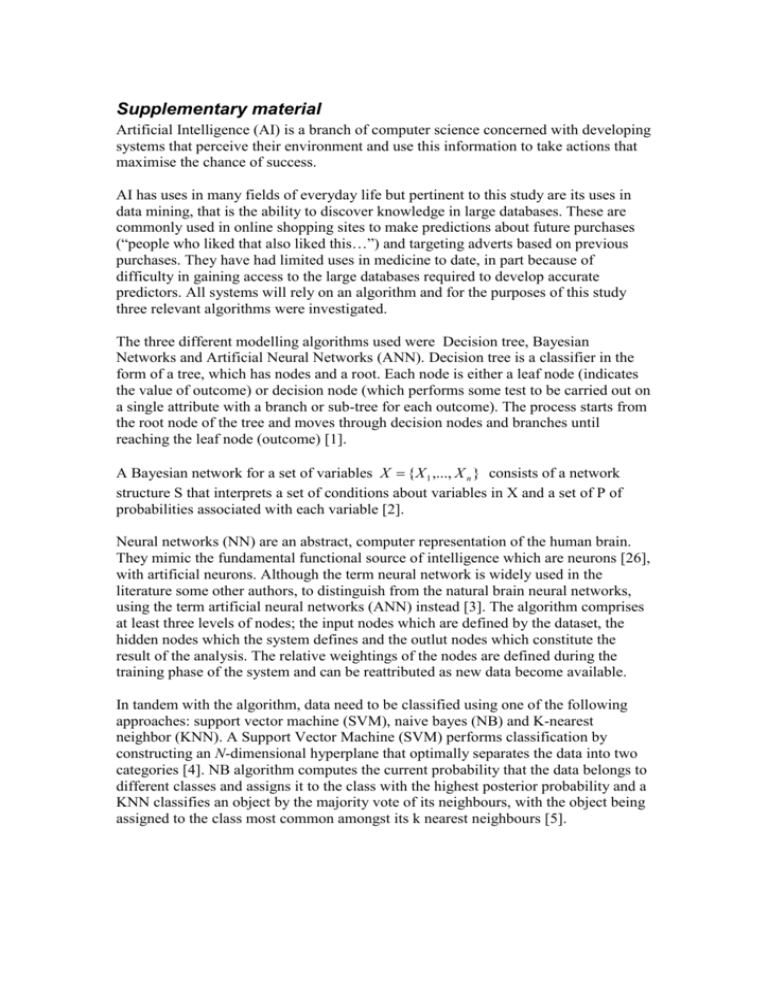
Supplementary material
Artificial Intelligence (AI) is a branch of computer science concerned with developing
systems that perceive their environment and use this information to take actions that
maximise the chance of success.
AI has uses in many fields of everyday life but pertinent to this study are its uses in
data mining, that is the ability to discover knowledge in large databases. These are
commonly used in online shopping sites to make predictions about future purchases
(“people who liked that also liked this…”) and targeting adverts based on previous
purchases. They have had limited uses in medicine to date, in part because of
difficulty in gaining access to the large databases required to develop accurate
predictors. All systems will rely on an algorithm and for the purposes of this study
three relevant algorithms were investigated.
The three different modelling algorithms used were Decision tree, Bayesian
Networks and Artificial Neural Networks (ANN). Decision tree is a classifier in the
form of a tree, which has nodes and a root. Each node is either a leaf node (indicates
the value of outcome) or decision node (which performs some test to be carried out on
a single attribute with a branch or sub-tree for each outcome). The process starts from
the root node of the tree and moves through decision nodes and branches until
reaching the leaf node (outcome) [1].
A Bayesian network for a set of variables X { X 1 ,..., X n } consists of a network
structure S that interprets a set of conditions about variables in X and a set of P of
probabilities associated with each variable [2].
Neural networks (NN) are an abstract, computer representation of the human brain.
They mimic the fundamental functional source of intelligence which are neurons [26],
with artificial neurons. Although the term neural network is widely used in the
literature some other authors, to distinguish from the natural brain neural networks,
using the term artificial neural networks (ANN) instead [3]. The algorithm comprises
at least three levels of nodes; the input nodes which are defined by the dataset, the
hidden nodes which the system defines and the outlut nodes which constitute the
result of the analysis. The relative weightings of the nodes are defined during the
training phase of the system and can be reattributed as new data become available.
In tandem with the algorithm, data need to be classified using one of the following
approaches: support vector machine (SVM), naive bayes (NB) and K-nearest
neighbor (KNN). A Support Vector Machine (SVM) performs classification by
constructing an N-dimensional hyperplane that optimally separates the data into two
categories [4]. NB algorithm computes the current probability that the data belongs to
different classes and assigns it to the class with the highest posterior probability and a
KNN classifies an object by the majority vote of its neighbours, with the object being
assigned to the class most common amongst its k nearest neighbours [5].
Table 1. clinical characteristics of dataset
total
age
stage
grade
1
2
3
4
170
39
354
64
41
1
2
3
105
94
305
164
300
260
46
62
0
histological type high grade serous
endometrioid
clear cell
mucinous
preoperative
CA125
outcome of
surgery
missing
median
data
67
6
420
complete
optimal
suboptimal
261
164
136
113
107
Additional references
1.
2.
3.
4.
5.
Alpaydin, E., Introduction to Machine Learning (Adaptive Computation and
Machine Learning)2004, Cambridge: MIT Press.
Neapolitan, R., Learning Bayesian Networks2004, New Jersey: Prentice-Hall.
Fausett, L., Fundamentals of neural networks1994, New Jersey: Prentice-Hall.
Cristianini, N. and J. Shawe-Taylor, An Introduction to Support Vector
Machines2000, Cambridge: Cambridge University Press.
Enas, G. and S. Choi, Choice of the smoothing parameter and efficiency of the
k-nearest neighbour classification. Comput. Math. Applic, 1986. 12: p. 235244.


